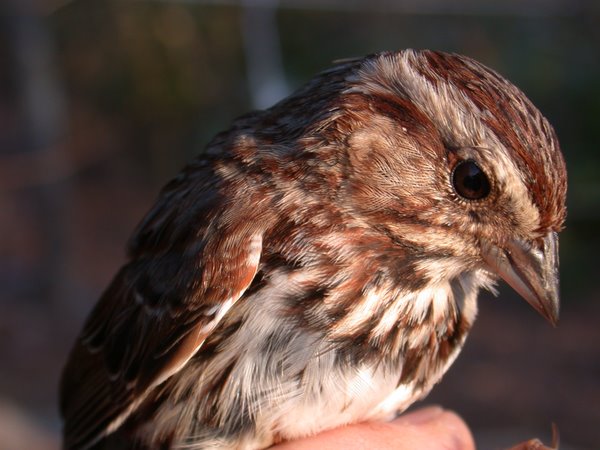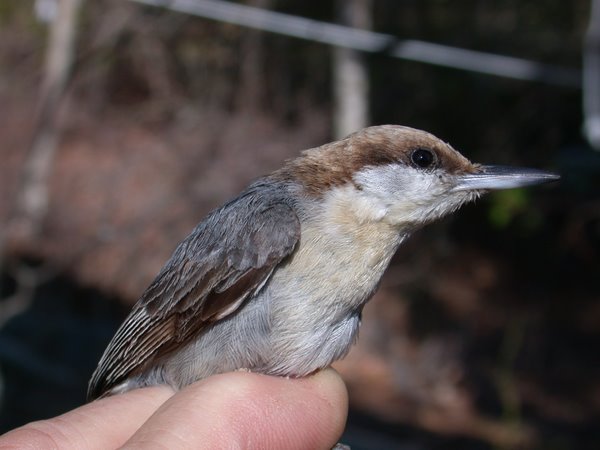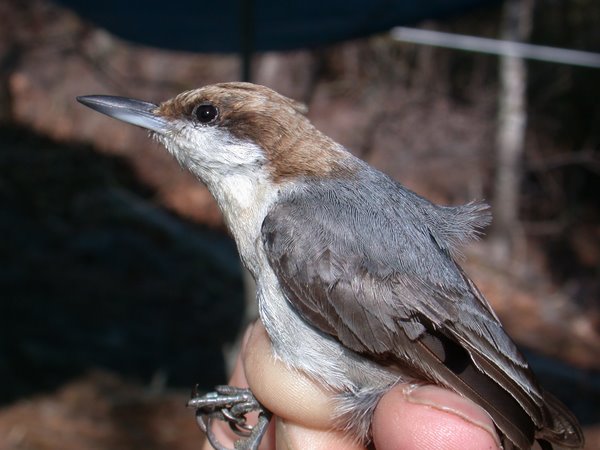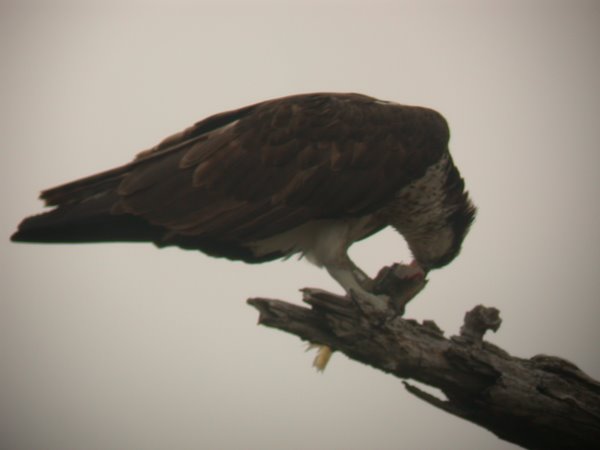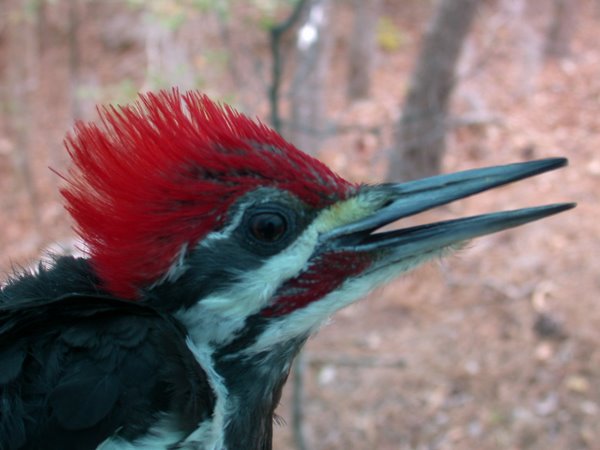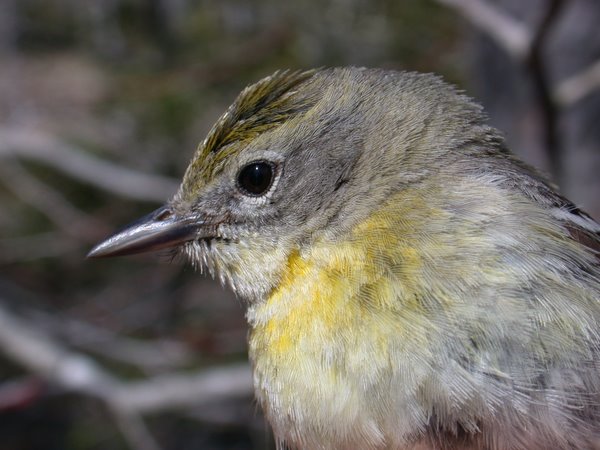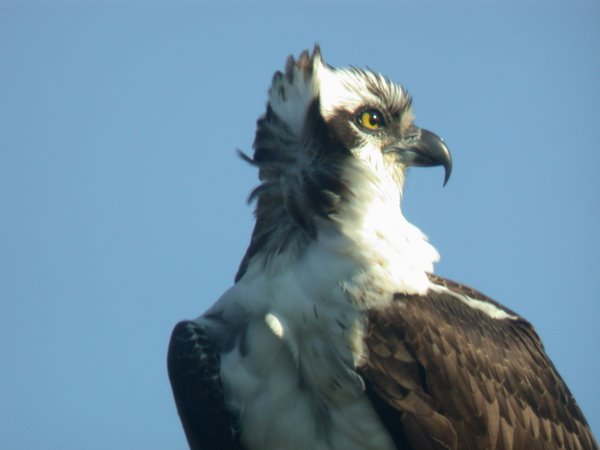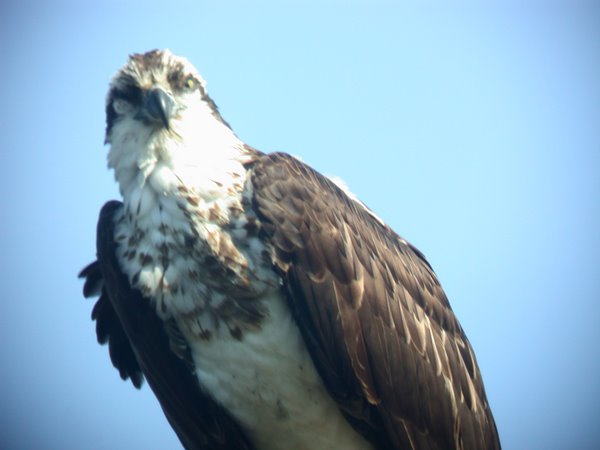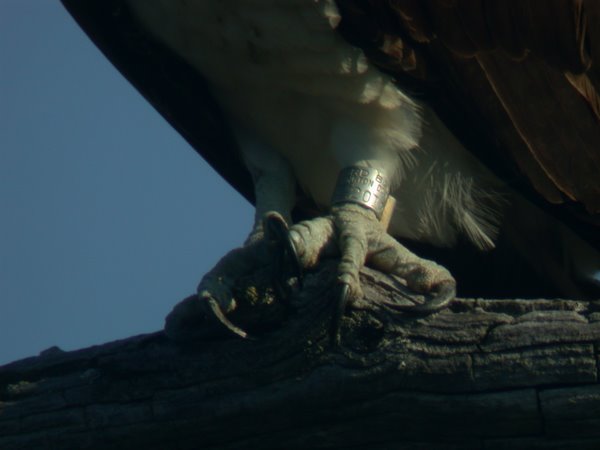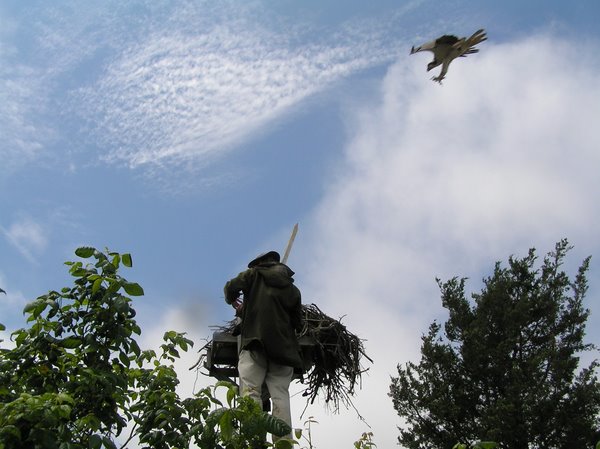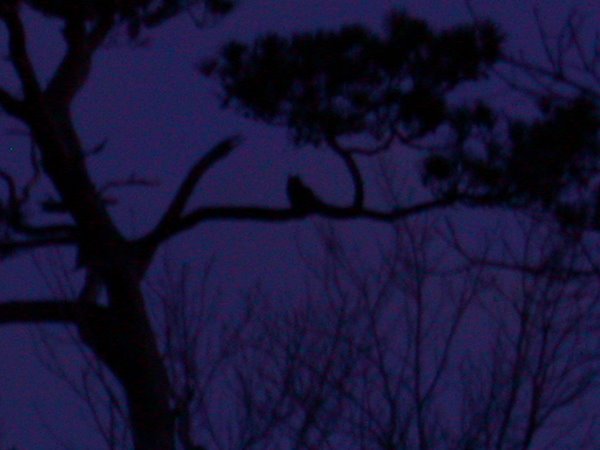

Greetings. March is close at hand on this chilly, gray February day. And March brings the opening of the 5th season of spring, passerine banding at First Landing State Park by CVWO.org and the re-awakening of this blog. Do not be misled! It will be chilly and gray on more than a few March days at the station. But spring will be in the air and birds will find the nets again.
Indeed, some winter passerine banding has been undertaken this year in the Park. A handful of new Brown-headed Nuthatches have been marked and a number of previously marked BHNU have been re-spotted in familiar settings. [More about that in an upcoming, first-annual project report.]
Fifteen swamp sparrows which are wintering in the Park have been target netted on territory using a two-panel net and a MP3 player. Of great interest are two recaptures of previously marked SWSP on November 26 and Decamber 9, 2008. The individuals were banded last spring at FLSP on March 31 and April 16, 2008, respectively, and not recaptured thereafter during the spring. As SWSP do not breed in FLSP, another returning winter resident can tentatively be added to the list.
This spring a basic bird banding training session will be held at FLSP for the first time. Participation in the training session is limited to ten participants. A preference will be given to current college students and recent graduates demonstrating an interest in bird research. A notice of the session may be found here:
http://docs.google.com/Doc?id=dhcd63wk_2f5bwsjd9Finally, this season the station will open on March 1, rather than March 15, and close on May 31. Between March 1 and March 14 the station will open
on seven days only. After March 15th the station will be open daily, weather permitting, 30 minutes before sunrise for six to eight hours each day. It is thought that the March 1 to March 14 opening on selected fair weather days will allow allow us to capture greater numbers of wintering passerines, such as American Robin, Eastern Towhee, Fox Sparrow, Hermit Thrush and Yellow-rumped Warblers, before they depart from the Park on their north-bound migration.














































